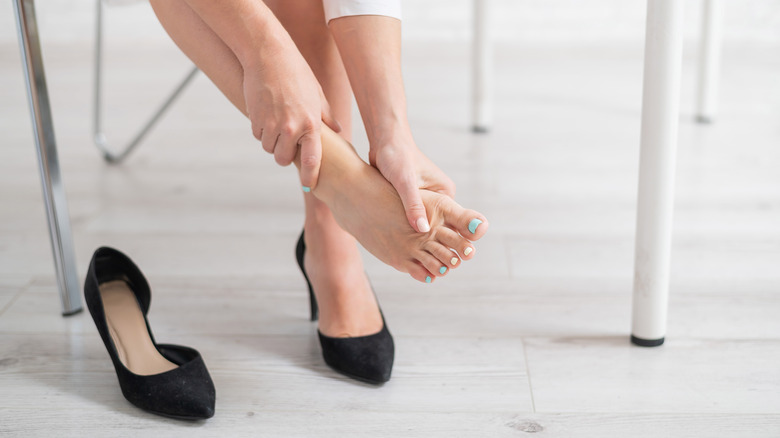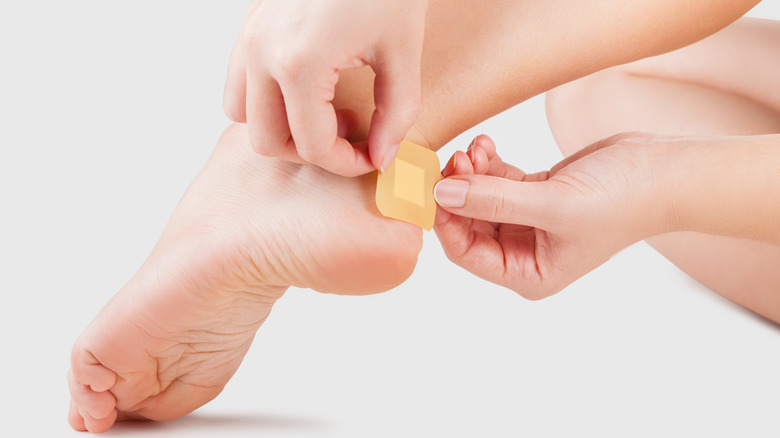Here's What You Should Know About Friction Blisters
Nothing ruins a night out more than an unwelcome blister from a pair of too-tight shoes. Referred to as a friction blister, these soft, fluid-filled pockets of skin commonly pop up on the hands, fingers, toes, and feet as a result of continuous rubbing of the area, explains Medical News Today. The repeated rubbing eventually causes the area to become red, hot, and sensitive to the touch. Friction blisters are the body's way of protecting deeper layers of the skin after the outermost skin layer has been damaged. It does this by forming a barrier.
While a friction blister may sound like nothing more than a pesky inconvenience, some research shows that they can be far more damaging than you might expect. According to research published in the American College of Sports Medicine Health & Fitness Journal, foot friction blisters can impact soldiers' ability to operate in the field by limiting their motility and concentration, as well as pulling focus in the midst of important decision-making. Research also shows that in severe cases, friction blisters that are left untreated can lead to cellulitis, sepsis, and death. In addition to military personnel, athletes and hikers are also particularly susceptible to friction blisters.
Treatment and prevention
So what should you do once a friction blister makes an appearance? Reduce exposure to the elements by lightly covering it with a bandage, suggests the American Academy of Dermatology Association (AAD). Even better, tuck in the sides of the bandage so a little raised space remains between the middle of the bandage and the blister. If the blister is in a pressure area, then you should apply padding before covering it with a bandage.
Resist the temptation to pop the blister. Doing so can lead to infection. However, if the blister is painful and sizable enough that it requires draining, take a small needle sterilized with rubbing alcohol and carefully insert it into one edge of the blister. Do not peel off the skin flap once it's drained. Rather, cleanse the area with soap and water and cover it with petroleum jelly. In the event that the blister becomes infected, be sure to consult with your physician.
The AAD also outlines preventative measures one can take to reduce the chances of friction blisters forming in the first place. Keep areas most prone to blisters appropriately covered and void of moisture. For the feet, this can mean investing in a pair of nylon socks or wearing two pairs of socks. Avoid cotton socks as they can trap moisture, increasing the risk of friction. You can also apply bandages, petroleum jelly, or powder ahead of time to sensitive areas. Generally, friction blisters resolve themselves within seven to 14 days.


